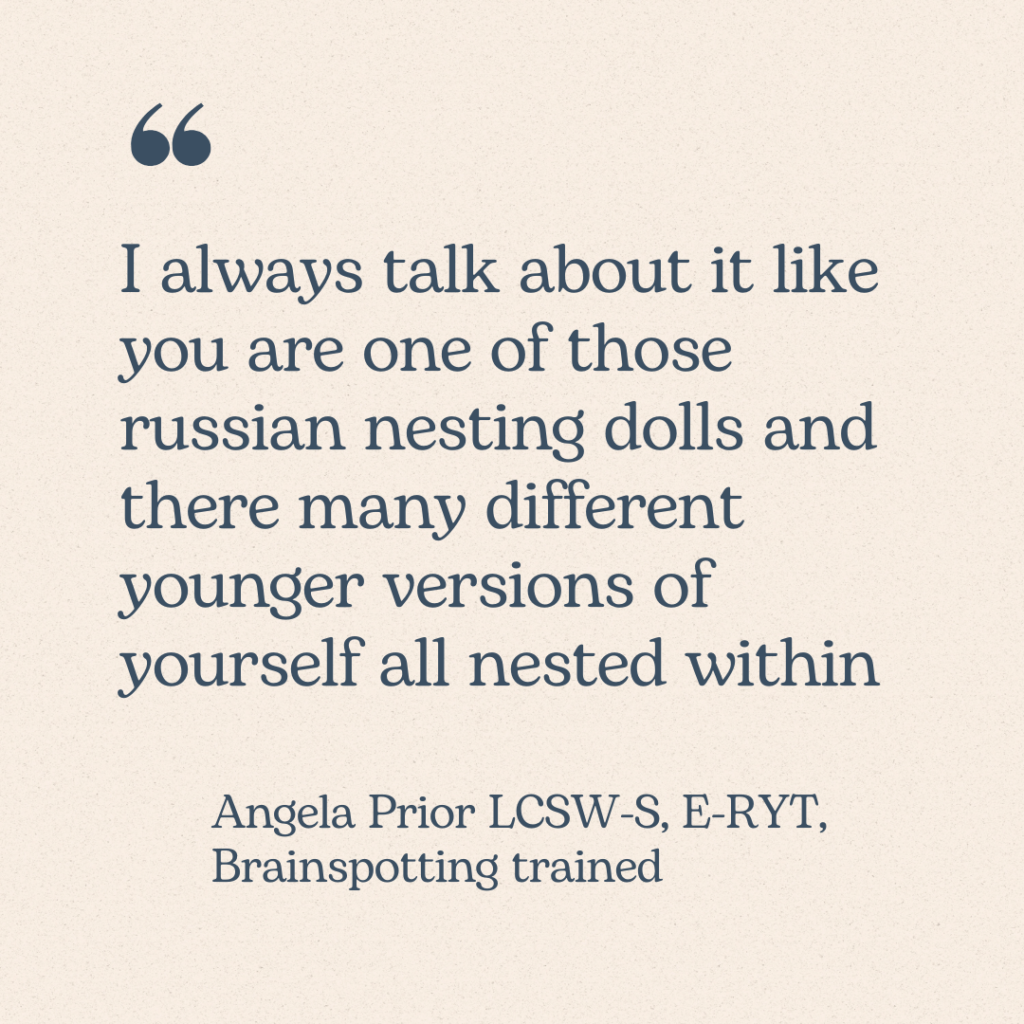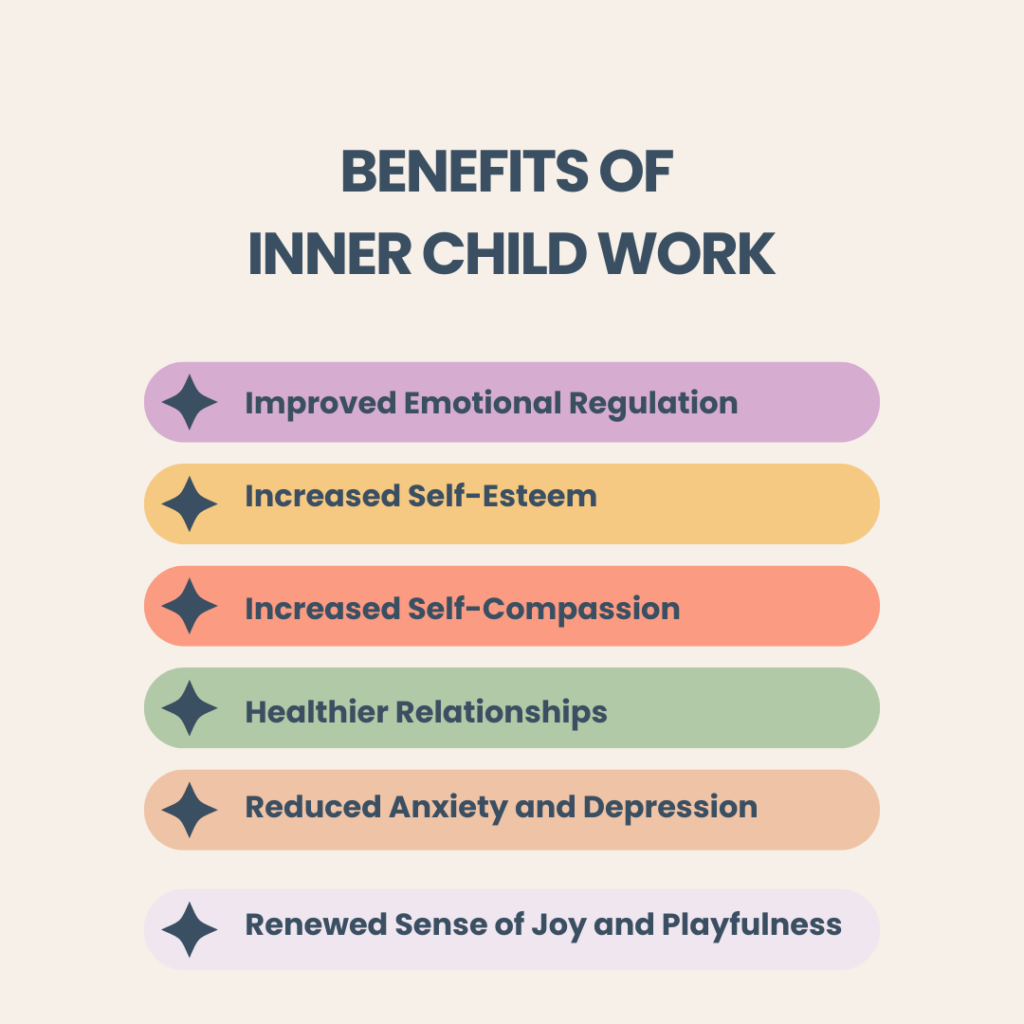Angela Prior
lcsw, ryt, ciec
hey there!
The AP blog is here for all things mental health, embodiment, yoga, and burnout. Poke around and take what you need.
meet angela
What is “Inner Child Work”
June 16, 2025
Have you ever heard of the term inner child or inner child work? It’s a concept in psychology that represents the part of your psyche that holds the emotions, memories, and experiences of your childhood. I always talk about it like you are one of those Russian nesting dolls and there many different younger versions of yourself all nested within.

These younger versions of you hold past experiences that include joy, innocence, and spontaneity of youth, but also the pain, fear, and confusion of difficult or traumatic experiences. When these childhood needs for love, safety, and validation go unmet, the “wounded inner child” can manifest in our adult lives sometimes through unhealthy coping mechanisms, emotional dysregulation, and relationship difficulties.
This is when it may be helpful to begin to unpack all those younger versions of yourself and reconnect with these vulnerable parts and provide them care, understanding, and acceptance. It’s a process called “reparenting” your inner child, with your adult self stepping in as the compassionate and supportive figure you may have needed back then.
This therapeutic process is not about blaming our parents or caregivers. While acknowledging past hurts is crucial, the focus is on empowering you in your present so you can change old patterns and beliefs.
As a child you did not have the authority, autonomy, maturity, or ability to care for yourself in certain ways because you were a child. Often even with the most nurturing of caregivers we have had needs that time that went unmet or the care was not what was needed at that time. As adults you now do have the means to care for that younger version of yourself fully and completely. Inner child work is an opportunity to step in your power and strength and be the adult you may have needed.

Therapists can utilize a variety of techniques to guide someone through inner child work. My favorites usually included meditation, guided imagery, using childhood photographs, and encouraging child-like play. You can also integrate this work into other therapy modalities such as somatic therapy, narrative therapy, EMDR, music therapy, art therapy, and other forms of experiential processing.

eight free meditations
To Support Your Mental Health
Let's Work Together
Meet Our Team of Therapists + Yoga Instructors